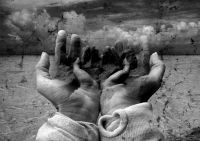Don’t Feed the Man Fish
17/09/2008 - 20/09/2008
Production Details
Some watch from afar and dream
Some like to dive into its nectar of pleasures, bathe their own contentment
Real or imagined, all want a piece of it for themselves to build their own happiness upon
But who will take responsibility?
An exciting new dance theatre piece meshes Pacific cultural performing arts and traditions of storytelling with cutting edge dynamics of contemporary dance to tell one of the most important stories of all time.
It is a story of cultures told through cultures, where new and old stories are told in old and new ways. We have a beginning and a middle and you are our ending…
BATS
Season: Wednesday 17 September – Saturday 20 September
Time: 6.30pm
Tickets: $15 full / $12 concession / $12 groups (5+)
book now! book@bats.co.nz
Keen choreographic intelligence brings a fresh and compelling voice to NZ dance
Review by Lyne Pringle 19th Sep 2008
Keen choreographic intelligence brings a fresh and compelling voice to NZ dance
I was intrigued by the subject matter and curious to see how this collective of graduates and their teacher from Whitireia Performing Arts in Porirua would deal with the weighty issue of climate change and its affect on one man’s struggle for survival on a sinking island in the Pacific.
The unusual title alludes to some higher power deciding about our fate but the final lovely image of the piece – light cupped in the hands – places the solutions to the most pressing concern of our epoch firmly back in our hands.
The story is told simply, with love and force by this tight unit of performers.
Cathy Livermore, Crystal Sciascia, John-Matai Ferguson and Falani Kalolo dance whilst Tangata Tangatatuta’i acts; each gets a chance to shine in their own particular way.
As the piece begins it is immediately obvious there is a keen choreographic intelligence at work (there is no credit in the programme but the BATS website names Cathy Livermore as choreographer). Livermore’s tenure as a contemporary tutor at Whitireia has allowed her choreographic ideas to mature and a creative partnership with Kalolo has provided a platform for this work.
The skills of these dancers are well used. Cathy Livermore is a luminous presence with fluid motion, clean lines and an immense sympathy with the earth – she really catches the eye! Crystal Sciascia also commands the stage with great warmth, strength and precision.
The two men are well balanced also with John-Matai Ferguson bringing a feisty intensity whilst Falani Kalolo is a potent force imbuing the movement with meaning and sincerity.
At one point a miniature waka carrying a conch moves by itself across the front of the stage. Later this is traded for luggage. This image would have more impact in a larger space as the sight lines are impaired at the front of the stage.
Much of the group work involves interweaving and complex layering to conjure, in the early stages, the tumbling of waves and the intricacies of tropical ecosystems, then later the movement of travellers and their luggage across water.
Fusions of contemporary and traditional Polynesian movements are well investigated and presented in original phrases. Throughout there is a lovely balance between the energy of the males and females, particularly in a section that begins with a beautiful duet for the women that segues into some fine partner work between Kalolo and Livermore.
Tangata Tangatatuta’i arrives amidst the swirling language of dance to speak. His gravitas allows the piece to orbit around him but there is an adjustment required to now view the work through the lens of conventional theatre practice. The text is not as sophisticated as the choreography and the performer needs more confidence in his story telling ability. Although they are the least successful scenes in the performance, they are necessary for specificity but could do with some direction, more energy and pace in delivery and dramaturgical input into the text.
The fact that the other performers remain mute is a reference I suppose back to the name of this group (Mute Off) which is a nice device but it does make it challenging for the speaking performer. Perhaps this could be accentuated so that we get more drama between the characters.
It is an interesting cusp between the abstraction of movement and character; the possibilities could be teased our further to really build the considerable potential of this group.
That said the scene with the guitar is beautifully played and a poignant symbol for the loss of cultural landmarks. It could have done with more texture in the lighting here – well done by Sefton Bates throughout the rest of the piece – to really bring out the emotion. The sound track by Livermore and Kalolo is clever and appropriate if a little overbearing at times.
The members of this tribe/whanau are caught in a whirlwind of change; the cultural heartbeat irregular as movement becomes furious, broken, disjointed and etched with sorrow.
Tangatatuta’i asks, "What am I supposed to do when this island is gone?"
The ominous implication is that the tide of time will wash away the sands he stands upon along with his language and culture. Sobering.
The final dance, exquisitely performed with beautiful music, and costumes by Cleo Thorpe-Ngata, evokes displaced and captured exotic birds. The choreography is particularly fine; light catches the dancers’ hands as they grasp for their future escaping on the sand.
MUTE OFF brings a fresh and compelling new voice to the New Zealand dance canon.
Copyright © in the review belongs to the reviewer





Comments